Bringing the Desert Home: Why a Cactus Collection Thrives in the Living Room
Imagine stepping into your living room and being greeted not by the usual furniture arrangement, but by a vibrant tapestry of spiky, sculptural forms. A collection of cacti, artfully arranged, transforms a conventional space into a miniature desert landscape, a conversation starter, and a testament to your unique style. But beyond the aesthetic appeal, incorporating a cactus collection into your living room offers a host of benefits, from air purification to a touch of low-maintenance greenery. Let’s delve into why these desert dwellers make fantastic additions to your indoor environment.
The Allure of the Arid: Embracing Desert Aesthetics
The beauty of a desert landscape lies in its stark contrast and resilient life. Cacti, with their diverse shapes, textures, and occasional bursts of vibrant blooms, embody this essence. They bring a sense of the wild, untamed beauty of the desert into your home. This aesthetic resonates with many, offering a counterpoint to the often-sterile environments of modern living. Plus, the architectural forms of cacti can complement a variety of interior design styles, from minimalist and modern to bohemian and rustic. Their unique shapes act as living sculptures, adding visual interest and a touch of the unexpected to your living space. The stark contrast between the plant and the pot can also contribute to the overall artistic appeal.
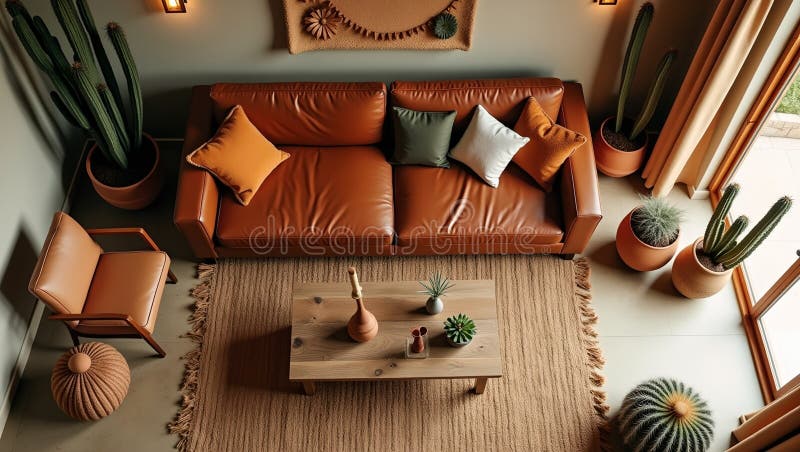
Low-Maintenance Majesty: The Practical Appeal of Cacti
Let’s be honest, not everyone has a green thumb, or the time to dedicate to fussy houseplants. This is where cacti truly shine. These desert survivors are incredibly low-maintenance, requiring minimal watering and care. They thrive on neglect, making them ideal for busy individuals or those new to plant ownership. Forget daily watering schedules and constant monitoring; cacti prefer to be left alone, allowing you to enjoy their beauty without the added stress. This inherent hardiness makes them a sustainable and practical choice for adding greenery to your home.
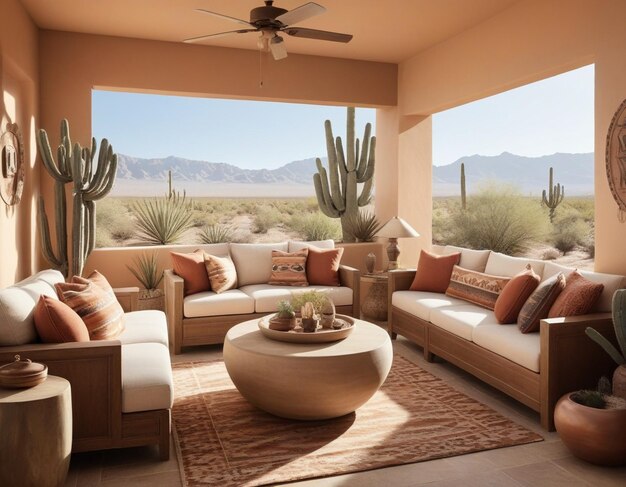
Air Purifiers Extraordinaire: Breathing Easier with Cacti
While not as efficient as dedicated air purifiers, cacti do contribute to cleaner indoor air. Like all plants, they absorb carbon dioxide and release oxygen during photosynthesis. They also filter out some common household toxins, such as formaldehyde and benzene. While the effect might be subtle with a small collection, every little bit helps in creating a healthier and more pleasant living environment. Consider it a bonus on top of their aesthetic and low-maintenance benefits.
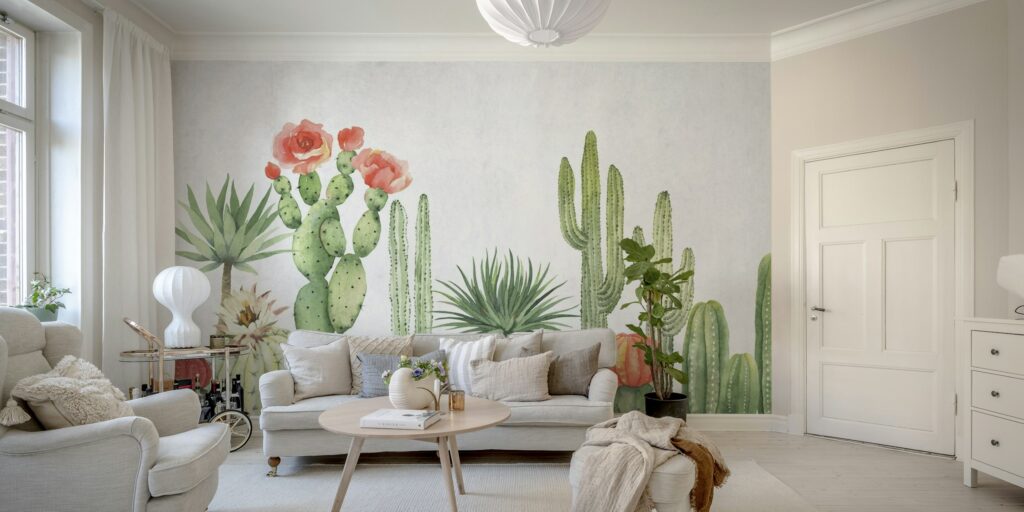
A Sustainable Statement: Eco-Friendly Decor
In an age of increasing environmental awareness, choosing sustainable decor options is more important than ever. Cacti, with their minimal water requirements and long lifespan, are a relatively eco-friendly choice. They require less resources to cultivate and maintain compared to many other houseplants, making them a responsible option for eco-conscious homeowners. By choosing cacti, you are contributing to a more sustainable lifestyle and reducing your environmental footprint. The use of terracotta pots further enhances this eco-friendly approach.
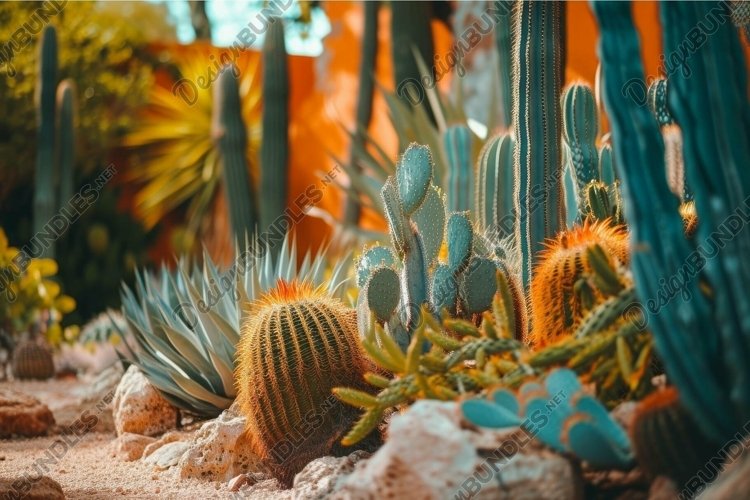
Designing Your Desert Oasis: Creating a Captivating Cactus Collection
Now that you’re convinced of the merits of a cactus collection, let’s explore how to create a stunning display in your living room. The key is to consider factors like light, space, pot selection, and plant arrangement to create a harmonious and visually appealing arrangement.
Sunlight is Key: Finding the Perfect Spot
Cacti are desert dwellers, which means they crave sunlight. Most cacti need at least six hours of direct sunlight per day to thrive. Choose a location in your living room that receives ample sunlight, preferably near a south-facing window. If you don’t have a naturally sunny spot, you can supplement with grow lights to ensure your cacti receive the light they need. Monitor your cacti closely for signs of insufficient light, such as etiolation (stretching towards the light) or pale coloration. Adjust their placement or light supplementation as needed.
Choosing the Right Cacti: A Variety of Shapes and Sizes
One of the joys of creating a cactus collection is the sheer variety of shapes, sizes, and textures available. From the towering saguaro to the tiny thimble cactus, there’s a cactus for every taste and space. Consider mixing and matching different varieties to create a visually dynamic display. Some popular choices include:
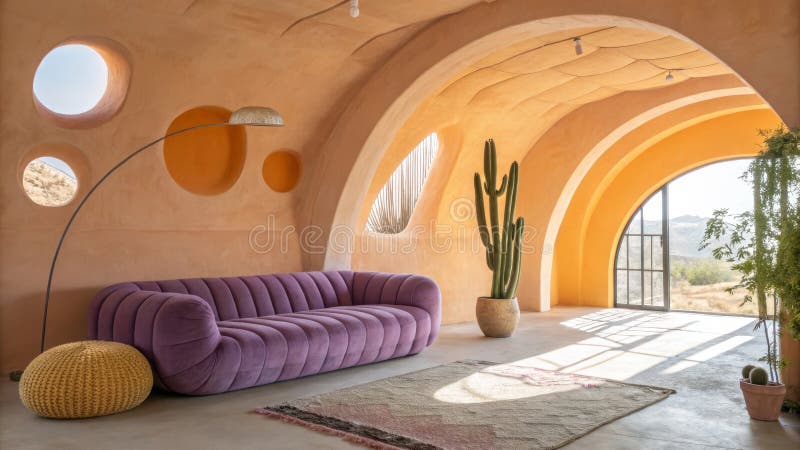
- Saguaro (Carnegiea gigantea): The iconic cactus of the American Southwest, best suited for large spaces.
- Barrel Cactus (Echinocactus grusonii): A round, spiky cactus that adds a sculptural element.
- Opuntia (Prickly Pear): Available in various shapes and sizes, with edible fruits.
- Cereus (Peruvian Apple Cactus): A tall, columnar cactus that can grow indoors.
- Mammillaria: A diverse genus of small, globular cacti with interesting spines.
- Echeveria (Succulent – often grouped with cacti): Rosette-shaped succulents that add color and texture.
- Haworthia (Succulent – often grouped with cacti): Small, slow-growing succulents with unique leaf patterns.
Don’t be afraid to experiment and choose cacti that appeal to you visually. Consider the mature size of each cactus when planning your arrangement to ensure they have enough space to grow.
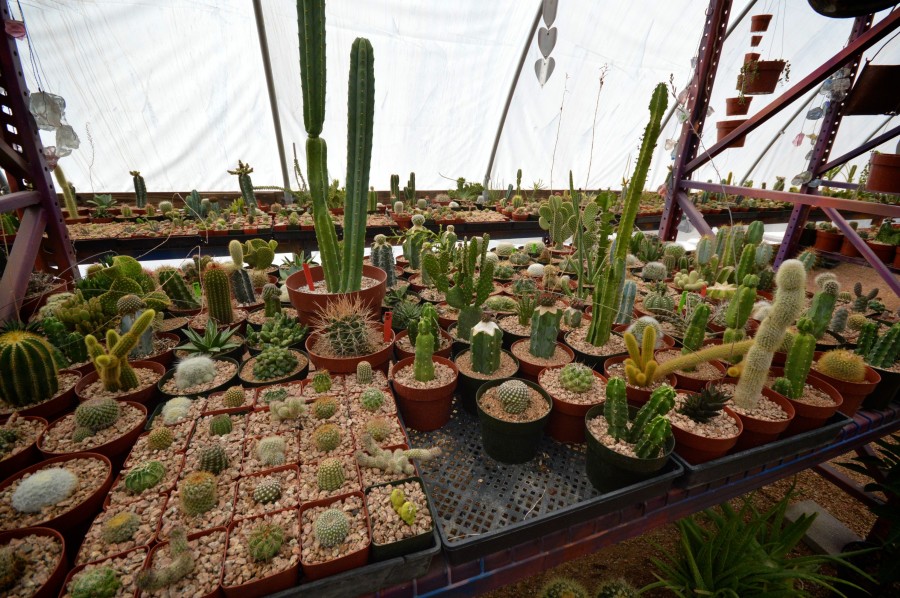
Potting Perfection: Choosing the Right Containers
The right pot can make all the difference in the aesthetic appeal of your cactus collection. Choose pots that complement your interior design style and provide adequate drainage for your cacti. Terracotta pots are a classic choice, as they are porous and allow excess moisture to evaporate. Ceramic pots are also a good option, but make sure they have drainage holes. Avoid plastic pots, as they can retain too much moisture and lead to root rot. Consider the size and shape of your cacti when choosing pots. Taller cacti will need heavier pots to prevent them from tipping over. Use a well-draining cactus potting mix to ensure proper drainage and aeration.
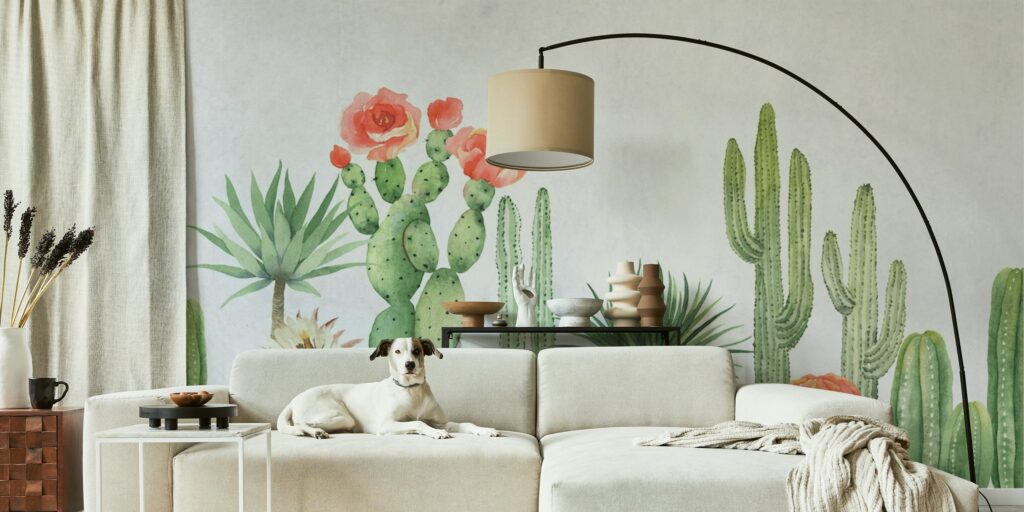
Arranging Your Desert Landscape: Creating Visual Harmony
Arranging your cactus collection is an art form in itself. Consider the following tips to create a visually harmonious display:
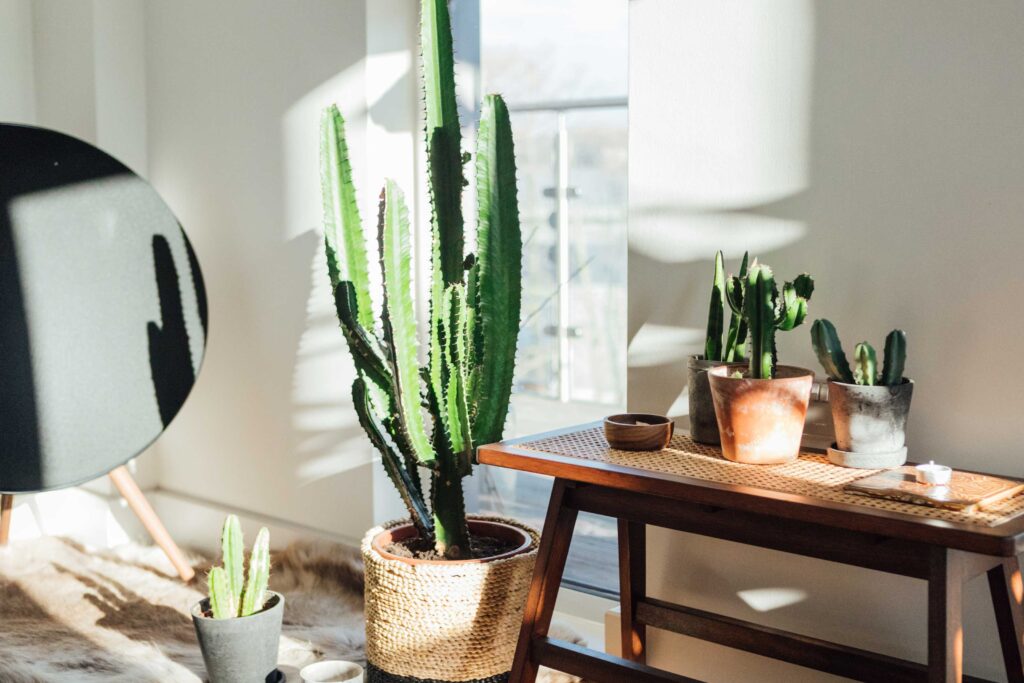
- Vary the heights and sizes: Group tall cacti with shorter ones to create visual interest.
- Use different textures and colors: Mix spiky cacti with smooth succulents to add depth and complexity.
- Create a focal point: Choose a larger or more unique cactus to serve as the centerpiece of your arrangement.
- Consider the spacing: Allow enough space between cacti for them to grow and to prevent overcrowding.
- Use rocks and pebbles: Add rocks and pebbles to the surface of the soil to mimic a natural desert landscape.
- Think about the overall composition: Arrange your cacti in a way that is pleasing to the eye and complements your existing decor.
Experiment with different arrangements until you find one that you love. Don’t be afraid to move things around and adjust the composition as your collection grows.
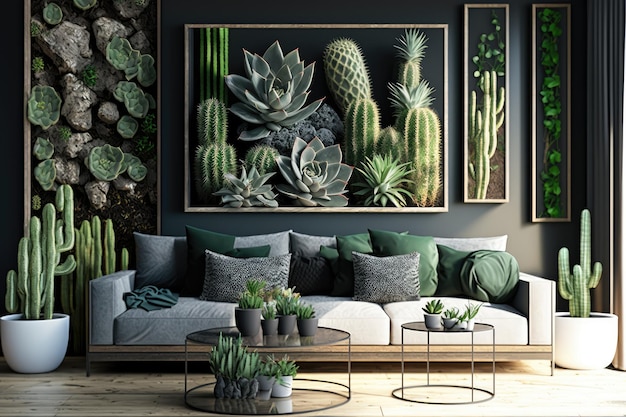
Cactus Care 101: Keeping Your Desert Dwellers Happy
While cacti are low-maintenance, they still require some basic care to thrive. Understanding their needs for watering, fertilization, and pest control is essential for keeping your cactus collection healthy and vibrant.
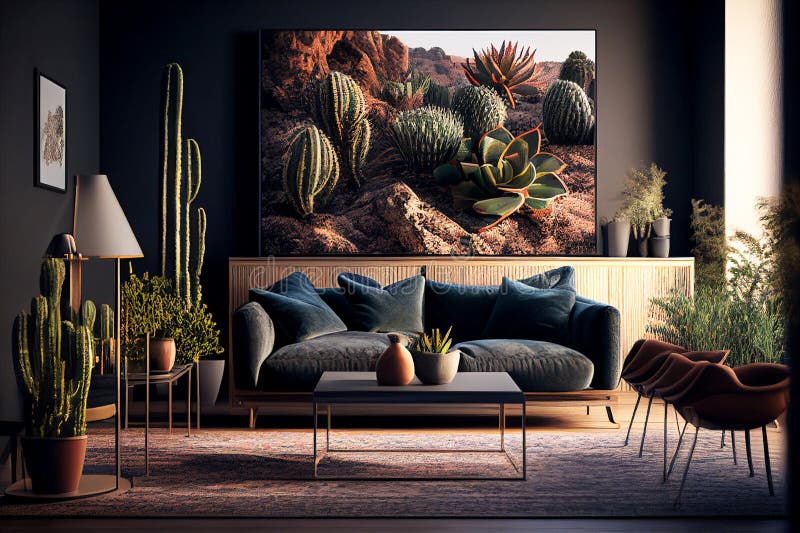
Watering Wisely: The Art of Desert Hydration
Overwatering is the most common mistake people make when caring for cacti. Cacti are adapted to dry conditions and store water in their stems and roots. Water your cacti only when the soil is completely dry. During the growing season (spring and summer), you may need to water them every two to four weeks. During the dormant season (fall and winter), you can reduce watering to once a month or even less. When you do water, water thoroughly until the water drains out of the drainage holes. Avoid getting water on the stems of your cacti, as this can lead to rot. Use rainwater or distilled water if possible, as tap water can contain minerals that can harm cacti.

Fertilizing Frugally: Feeding Your Cacti
Cacti don’t need much fertilizer, but a light feeding during the growing season can help them thrive. Use a cactus-specific fertilizer or a balanced fertilizer diluted to half strength. Fertilize your cacti once a month during the spring and summer. Avoid fertilizing during the dormant season.
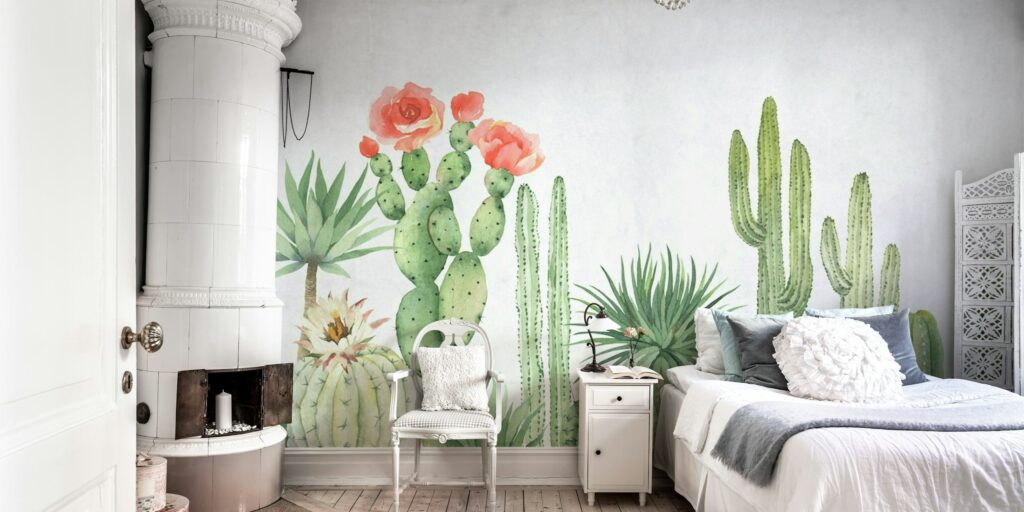
Pest Patrol: Protecting Your Cacti from Invaders
Cacti are relatively resistant to pests, but they can occasionally be affected by mealybugs, scale, or spider mites. Check your cacti regularly for signs of infestation, such as white cottony masses (mealybugs), small brown bumps (scale), or webbing (spider mites). If you find pests, treat them with insecticidal soap or neem oil. You can also try removing the pests manually with a cotton swab dipped in rubbing alcohol. Isolate infested cacti from other plants to prevent the pests from spreading.
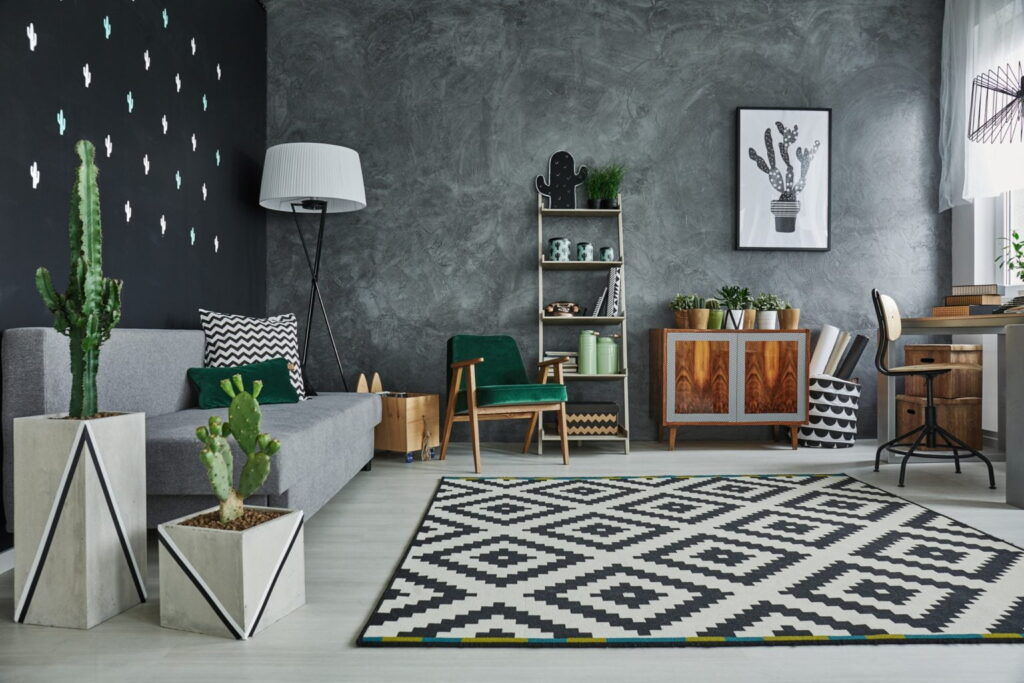
Repotting Routines: Giving Your Cacti Room to Grow
Cacti typically don’t need to be repotted very often. Repot them only when they outgrow their pots or when the soil becomes compacted. Choose a pot that is only slightly larger than the previous pot. Use a well-draining cactus potting mix. When repotting, be careful not to damage the roots. Wear gloves to protect your hands from the spines.
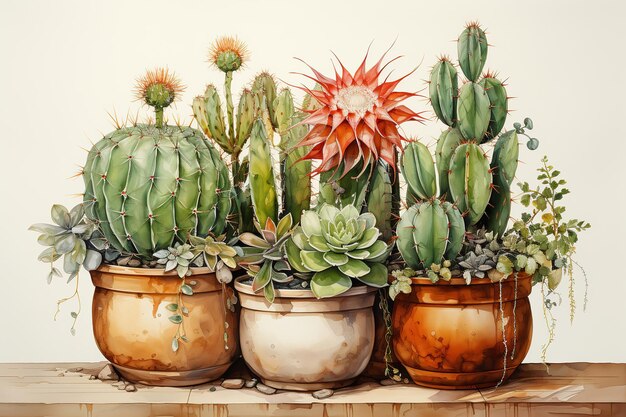
Beyond the Basics: Elevating Your Cactus Collection
Once you’ve mastered the basics of cactus care, you can explore some advanced techniques to elevate your collection and create a truly stunning display.
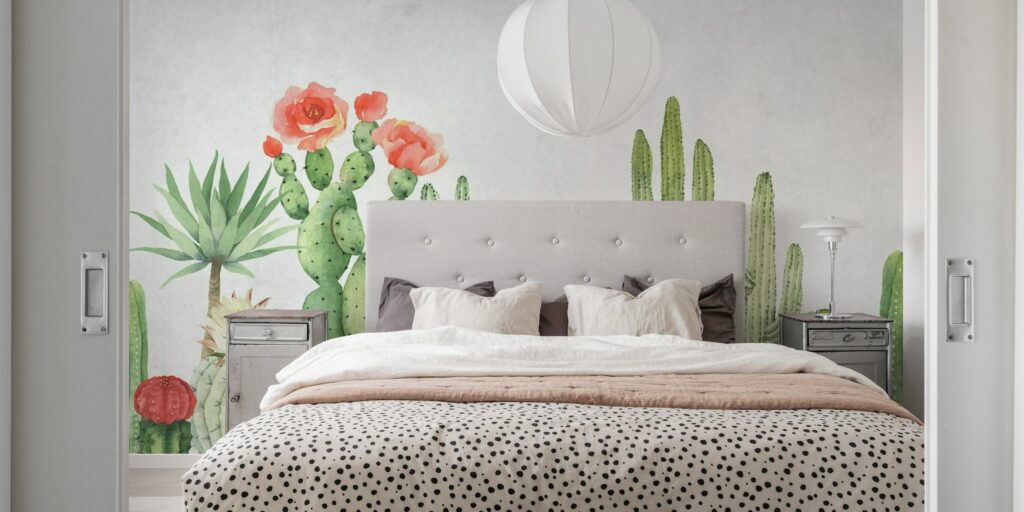
Grafting: Creating Unique Hybrids
Grafting is a technique that involves joining two different cacti together, allowing you to create unique hybrids and propagate difficult-to-grow species. Grafting requires skill and patience, but it can be a rewarding way to expand your collection and create one-of-a-kind plants.
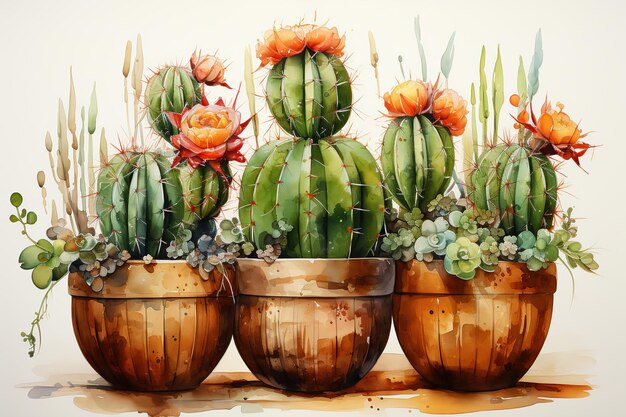
Seed Propagation: Growing Cacti from Scratch
Growing cacti from seed is a slow but rewarding process. It allows you to observe the entire life cycle of a cactus and create a unique collection of plants. Seed propagation requires careful attention to detail, but it can be a fun and educational experience.
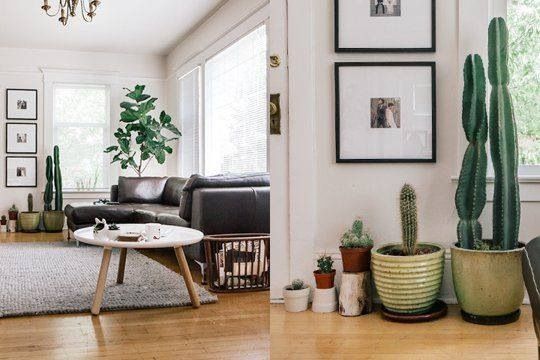
Displaying with Flair: Adding Artistic Touches
Consider adding artistic touches to your cactus display to enhance its visual appeal. Use driftwood, rocks, or other natural elements to create a more naturalistic landscape. Add small figurines or sculptures to add a touch of whimsy. Experiment with different lighting techniques to highlight the textures and shapes of your cacti. The possibilities are endless, so let your creativity guide you.
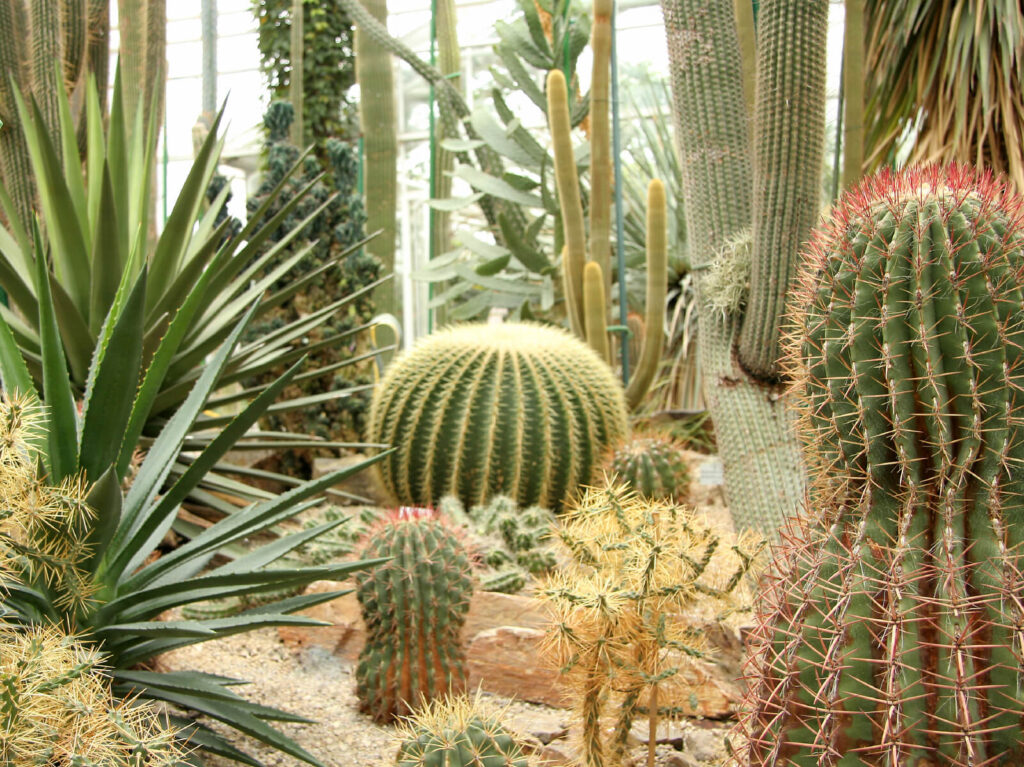
Troubleshooting Common Cactus Problems
Even with the best care, cacti can sometimes encounter problems. Here are some common issues and how to address them:
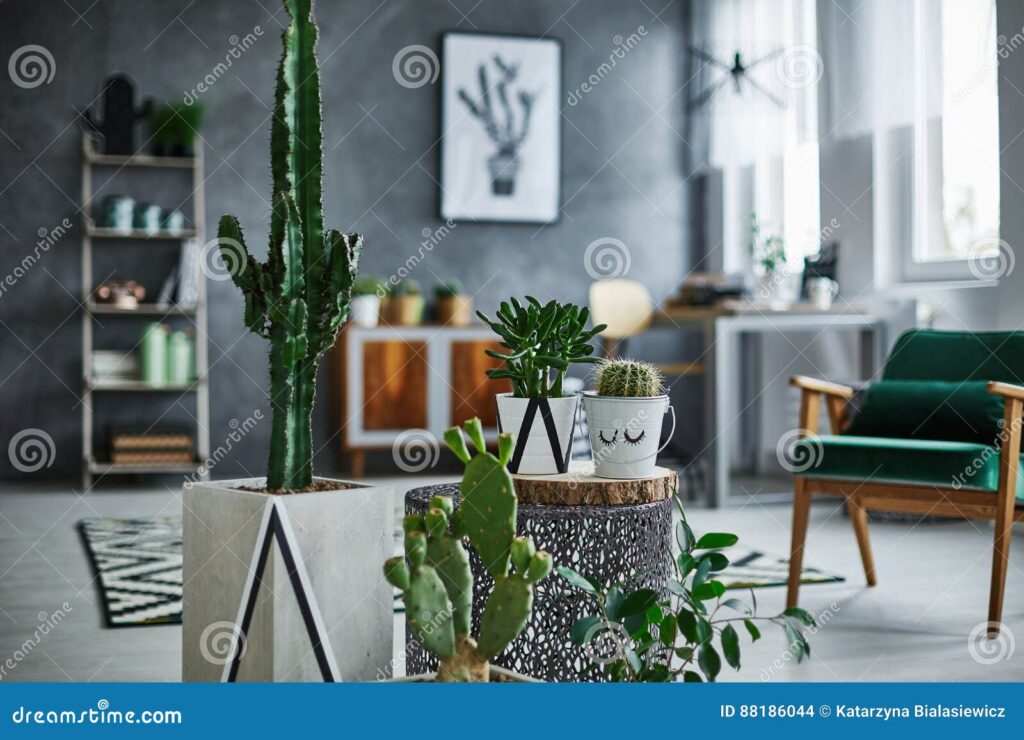
- Root Rot: Caused by overwatering. Repot in fresh, dry soil and allow to dry out completely between waterings. Consider using a fungicide.
- Etiolation: Stretching due to insufficient light. Move to a sunnier location or supplement with grow lights.
- Sunburn: Pale or brown patches due to excessive sun exposure. Provide shade during the hottest part of the day.
- Pest Infestations: Treat with insecticidal soap, neem oil, or manual removal.
- Lack of Flowering: May be due to insufficient light, improper watering, or lack of fertilization. Adjust care accordingly.
A Desert Oasis Awaits: Embrace the Cactus Collection Lifestyle
Bringing a cactus collection into your living room is more than just adding plants; it’s embracing a lifestyle. It’s about appreciating the beauty of the desert, the resilience of nature, and the simplicity of low-maintenance living. It’s about creating a space that is both visually stunning and environmentally conscious. So, take the plunge and start your own cactus collection today. You’ll be amazed at the transformative power of these spiky, sculptural wonders. Your living room will thank you for it.

And remember, the journey of building a cactus collection is an ongoing one. There’s always something new to learn, a new species to discover, and a new arrangement to create. Embrace the process, enjoy the beauty, and let your cactus collection be a reflection of your unique style and personality. So go ahead, design your desert oasis and make your living room a captivating and sustainable space.
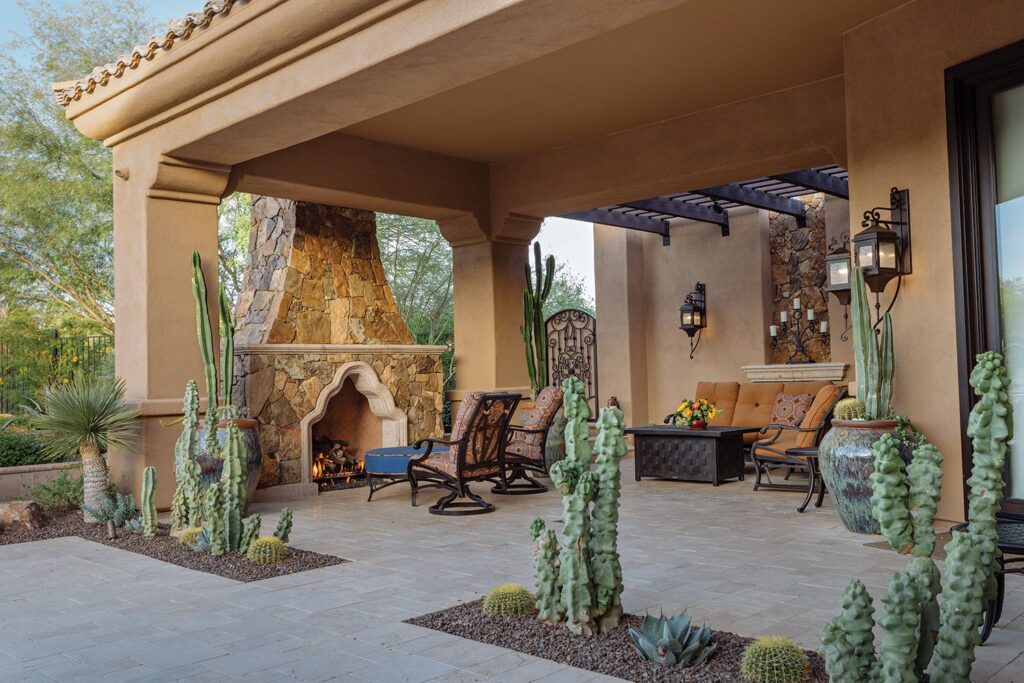
 Nimila
Nimila


